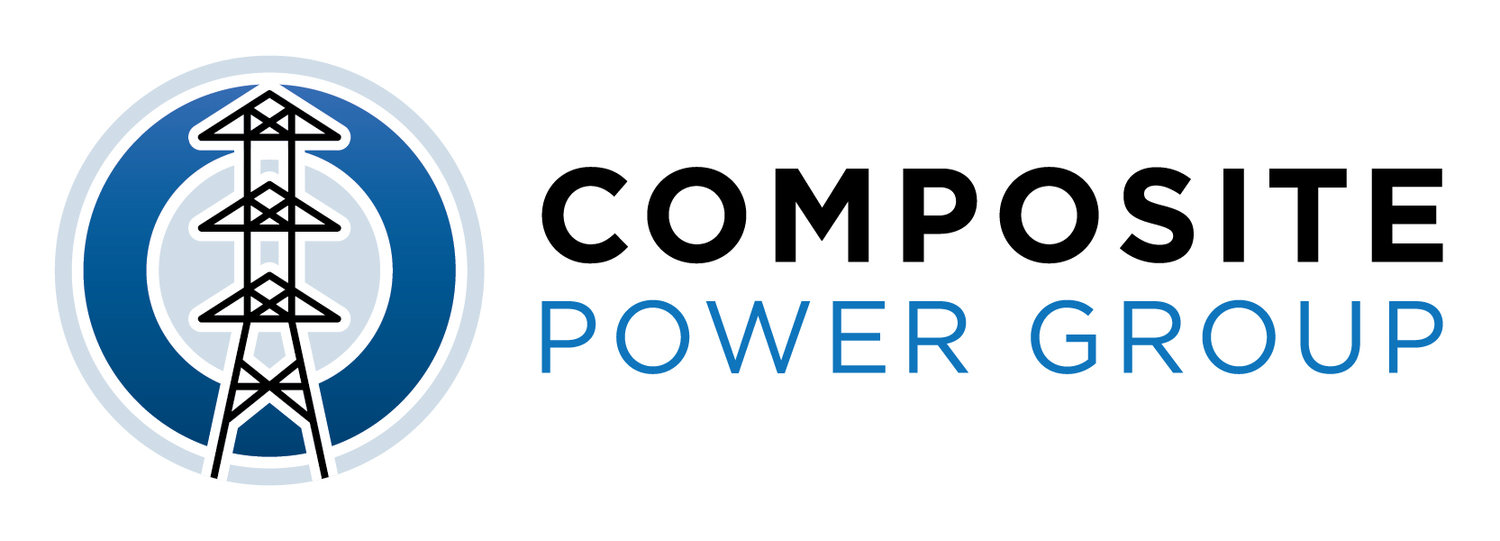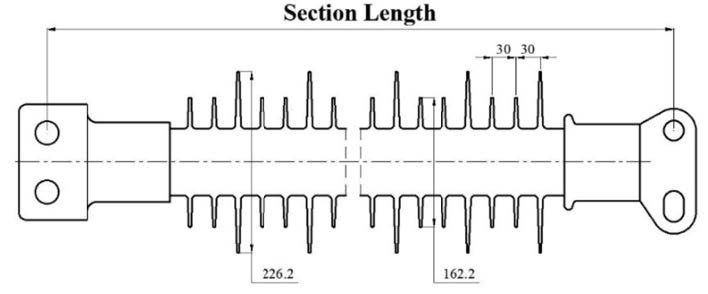Shemar Transmission Line Post Insulators
/69kV to 345kV
SHEMAR Composite Insulators
Delivering Superior Ageing Resistance and Longevity in Reliability Performance
SHEMAR composite insulators embody the latest innovations in composite insulation technology combining world leading material science development, cutting edge design technology, state-of-the-art manufacturing and rigorously monitored quality control. We understand the crucial impact that insulators can have on the long-term performance of transmission lines, which is why at SHEMAR we have prioritized creating composite insulator products and solutions that offer unparalleled, reliability, ageing resistance and exceptional performance.
Design Features and Manufacturing
One Piece Insulator without Joints
SHEMAR's composite transmission line post insulators are designed with advanced one-piece housing technology that eliminates internal interfaces, providing superior bonding performance and protection against erosion damage. The housing is directly vulcanized to the core, resulting in a single, seamless HTV silicone rubber housing (sheath and sheds) that is impenetrable to moisture ingress and provides ultimate defense against environmental factors. During manufacturing a single-shot injection molding process is used, which applies high pressure and temperature to ensure a robust, one-piece housing that is chemically bonded to the core rod. This one-piece housing design features only one internal interface, i.e. the boundary interface between the housing and the FRP core rod, which significantly reduces sensitivity to tangential electrical field stress that can cause erosion damage.
Integrated injection machine
Excellent bonding performance
Excellent Bonding between Core and Housing
SHEMAR's injection molding manufacturing process also creates an unmatched quality of chemically bonded interface between the rod and housing, as well as the end fitting and housing, which eliminates the risk of internal tracking along the longitudinal interface of the composite insulator. The bond between the silicone rubber housing and fiberglass rod is also mechanically stronger than the intrinsic tear strength of the silicone rubber, ensuring an incredibly durable and reliable insulator.
Impenetrable Triple Point
SHEMAR's composite transmission line post insulators feature an innovative and unique impenetrable cast sealing system to prevent water and contamination from entering the insulator at its triple point. This is achieved by using a HTV silicone rubber O-ring and overlapping part of the metal end fittings with an RTV rubber layer to ensure total enclose and protection of the sensitive triple junction zone (where metal end fitting/core rod/silicone housing meet).
Maximized Mechanical Integrity
To ensure uniform stress distribution and maximum mechanical integrity of the finished insulator a circumferential, multi-step crimping system is used for the attachment of metal end fittings to the FRP core. Each crimping process is monitored for acoustic emission, crimp pressure and travel distance of compression dies as control parameters. In addition, we also conduct mechanical simulations based on the actual crimping process, material parameters and product design, in order to confirm that there are no performance risks by checking the stress nephogram of each component. This process along with corresponding laboratory tests ensures a safe installation and operation of insulators during their service.
InjectSiotrne mssa ncehpinheogram of line Post Insulator
Optimal Electric Field Grading – No Water Droplet Corona
At SHEMAR, our composite insulators are carefully engineered to eliminate RIV and corona (under both dry and wet conditions). Rather than taking a one-size-fits-all approach, we design our corona rings in accordance with the actual requirements and use of the individual user. To achieve this, our application engineers utilize state-of-the-art 3D modeling and FEA simulations to determine the optimal size and placement of corona rings based on the specific structure design and overall assembly configuration. It is ensured that the maximum electric field criteria of ≤ 4.2 kVrms/cm on silicone rubber housing recommended by EPRI/STRI* is maintained on all of our designs and thus the phenomenon of water droplet induced corona (WDIC) and corresponding risk of material erosion is avoided. Lowering of electric field stress is also aided by the shape of the silicone rubber housing at the overmolded connection zone which works to decrease the electric field strength at the inner triple point and on the silicone surface itself. Furthermore, all of our corona rings are designed with an open (c-section) style, making them easy to install and replace.
Overall electric field simulation
Triple point electric field simulation
Designed to Endure Severe Environments
SHEMAR's composite transmission line post insulators are created to endure even the most severe service conditions, such as coastal salt fog, dust and industrial contamination without impairment in performance. Superior hydrophobicity retention and short hydrophobicity transfer and recovery times prevents the formation of conductive layer and the excellent tracking and erosion performance of the housing provides an additional defense mechanism. The insulator housing features alternating weather-shed profiles with both standard and high leakage distance designs, along with optimized shed spacing (S), overhang (P) and creepage factor (CF) parameters, to ensure maximum effectiveness, self-cleaning performance and resistance to contamination, ice and leakage currents in various environmental applications. All of our housing shed profile designs adhere to the recommendations given in IEC 60815-3 and have a minimum 3mm sheath thickness.
Materials and Components
Best-in-Class Silicone Rubber Housing
The special HTV silicone rubber formulation used in SHEMAR's composite insulator housings has been scientifically engineered as a result of extensive R&D in order to overcome the various environmental, electrical and physical degradation mechanisms and deliver the best-in-class ageing resistance and long-term reliable performance. SHEMAR carries out the entire process of HTV silicone rubber manufacturing in-house from raw material sourcing to mixing with special additives and fillers which achieves the best UV, tracking and erosion, weather ability and contamination resistance performance. SHEMAR HTV silicone rubber formulation has a long-term track record of successfully performing in some of the most extreme and demanding service conditions without degradation.
Fracture-Proof Core Rods
The fiberglass core rods for SHEMAR's composite transmission line post insulators are manufactured with boron-free, corrosion resistant ECR glass-fiber and epoxy resin. By using this E-CR boron-free formulation of fiberglass, the core rods have exceptional electrical integrity, and they are extremely resistant to hydrolysis and stress corrosion attack, which eliminates the risk of brittle fracture. Additionally, the core rods can withstand a 96-hour nitric acid resistance test as specified in IEC 62039. SHEMAR manufactures all of its fiberglass core rods in-house using a high-quality pultrusion process.
Standardized End Fittings
SHEMAR uses industry standard forged steel or ductile iron galvanized end fittings. All end fittings are subjected to rigorously incoming quality control inspections.
Corona ring installment
Corona Rings
Standard corona rings are made from high grade aluminum alloy. Rings made of galvanized steel are also available in case of arc current withstand requirements.
Standard corona ring
Testing and Quality
Compliant with National and International Standards
SHEMAR takes pride in being a truly global composite insulator enterprise. We have customized quality control plans for each type of transmission line post insulator and work instructions for each production line. Every transmission line post insulator goes through rigorous process verification, internal testing and third party testing. All of our composite transmission line insulators meet ANSI C29.17 and IEC 61952, and we carry out routine and sample tests on each batch of insulators to ensure a reliable manufacturing process. Additionally, SHEMAR's composite insulators also comply with the following tests:
5000 Hour Multi Stress Test as specified in IEC 62730
Accelerated Weathering Test (1000 h UV test) as specified in IEC 61109
Tracking and Erosion Test (Class 1A 4,5) as specified in IEC 60587
Resistance to Weathering and UV (5000 h UV test) as per ISO 4892-3
Resistance to Hydrolysis and Acid Attack on FRP Core as specified in IEC 62039
Tracking Wheel Test as specified in CSA C411.4
Resistance to Corona Cutting as per SHEMAR propriety test method
Resistance to Acid Rain as per SHEMAR propriety test method
Corona Ring Power Arc Withstand Test (20kA-0.25s, 5 shots) as per IEC 61467
Continuous R&D and Improvement
SHEMAR is dedicated to advancing key technologies, enhancing technical support, and ensuring the success of key projects. We are also focused on improving our independent innovation capabilities and core competitiveness in the rapidly evolving energy industry. This commitment has resulted in significant advancements in technical innovation, exceptional performance, and influential demonstration initiatives. These achievements have also earned recognition from the National Energy Administration. As evidence of our success, the National Energy Administration granted SHEMAR approval to establish the "National Energy Power Insulation Composite Material Key Laboratory" on August 24, 2014.
Currently, SHEMAR possesses robust and extensive in-house self-testing facilities that continually undergo refinement and enhancement. The company has established a comprehensive collection of material testing laboratories, structural mechanics testing laboratories, and electrical performance testing laboratories. These facilities are fully equipped to conduct physical and chemical property experiments on raw materials and samples, as well as structural mechanics and high-voltage electrical experiments on semi-finished and finished products. These resources enable SHEMAR to meet the research and development demands of high-quality external insulation products.
Our R&D team currently comprises 155 members, including 7 senior experts with doctorate degrees, 12 foreign technical experts, and 49 individuals with master's degrees. The team's research and development center is fortified by an interdisciplinary and cross-functional approach. With our team's continual expansion, more researchers from both domestic and international backgrounds are choosing to join SHEMAR's R&D efforts, contributing to the advancement of the green energy industry.
As of December 31, 2022, SHEMAR holds a total of 481 patents internationally.
Advantages and Reasons for Choosing SHEMAR Transmission Line Post Insulators
Innovative and reliable design methods and advanced manufacturing technology
Best-in-class composite materials and high quality components
Rigorous production quality control plan and strict testing of products
Fast delivery cycle and rapid after-sales service
Eliminates or reduces maintenance, more economical life cycle cost
How to Select the Right Transmission Line Post Insulator
Customized solutions
At SHEMAR, we can offer customized solutions tailored to our customers' specific requirements. We take into consideration the actual working conditions, such as the size of the support pole, connection method, required working load, and pollution level, as well as any unique applications that need to be addressed. By doing so, we guarantee that our products will meet 100% of our customers' needs
Standard catalogue products
To simplify the promotion of transmission grid projects and to facilitate quick selection by our customers, we have developed a range of standardized catalog products to choose from. These products offer shorter delivery cycles and increased flexibility for future replacements. For ease of reference, our detailed standardized selection library is provided below.
Transmission Line Post Insulators
LINE END FITTING
The line end fitting of Transmission Line Post Insulators are available in three different configurations: Horizontal Clamp-Top, Drop Tongue and Vertical Clamp-top.
BASE END FITTING
The base end fitting of Transmission Line Post Insulators are available in three different configurations: Bendable Gain Base, Bendable Flat Base and Bolt circle. *For other special bases, please contact us.
CORONA RINGS
SHEMAR's corona rings for transmission line post insulator are available in standard sizes of 11", 12". Corona ring application recommendations are provided based on the specific application. For more information, please contact us.































